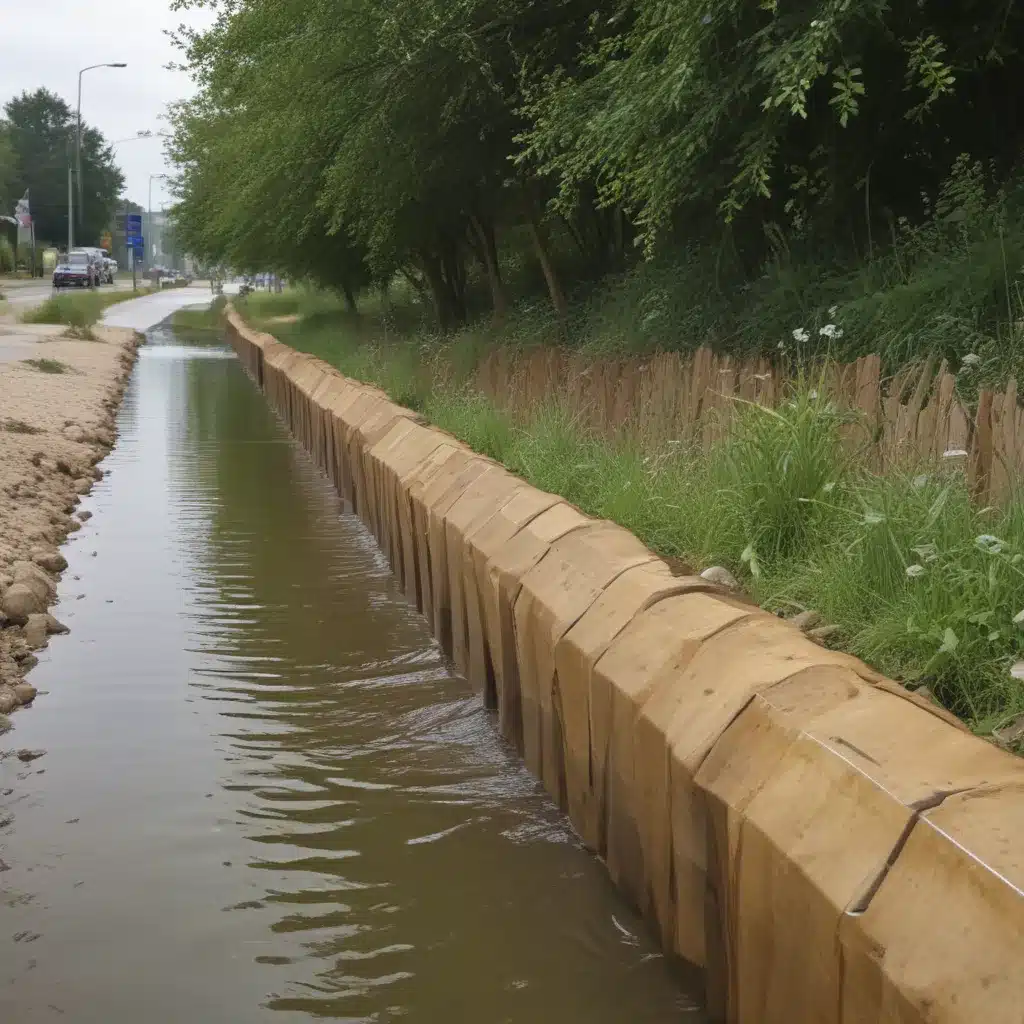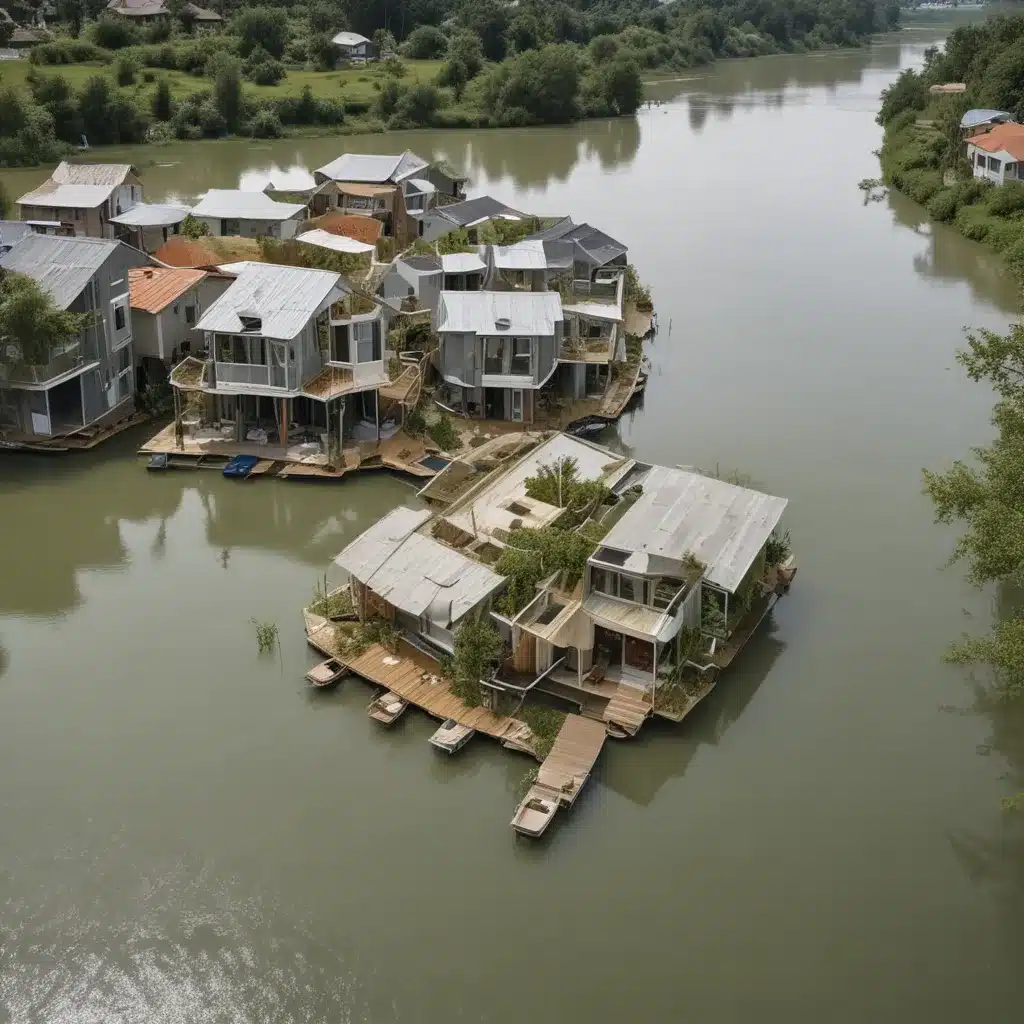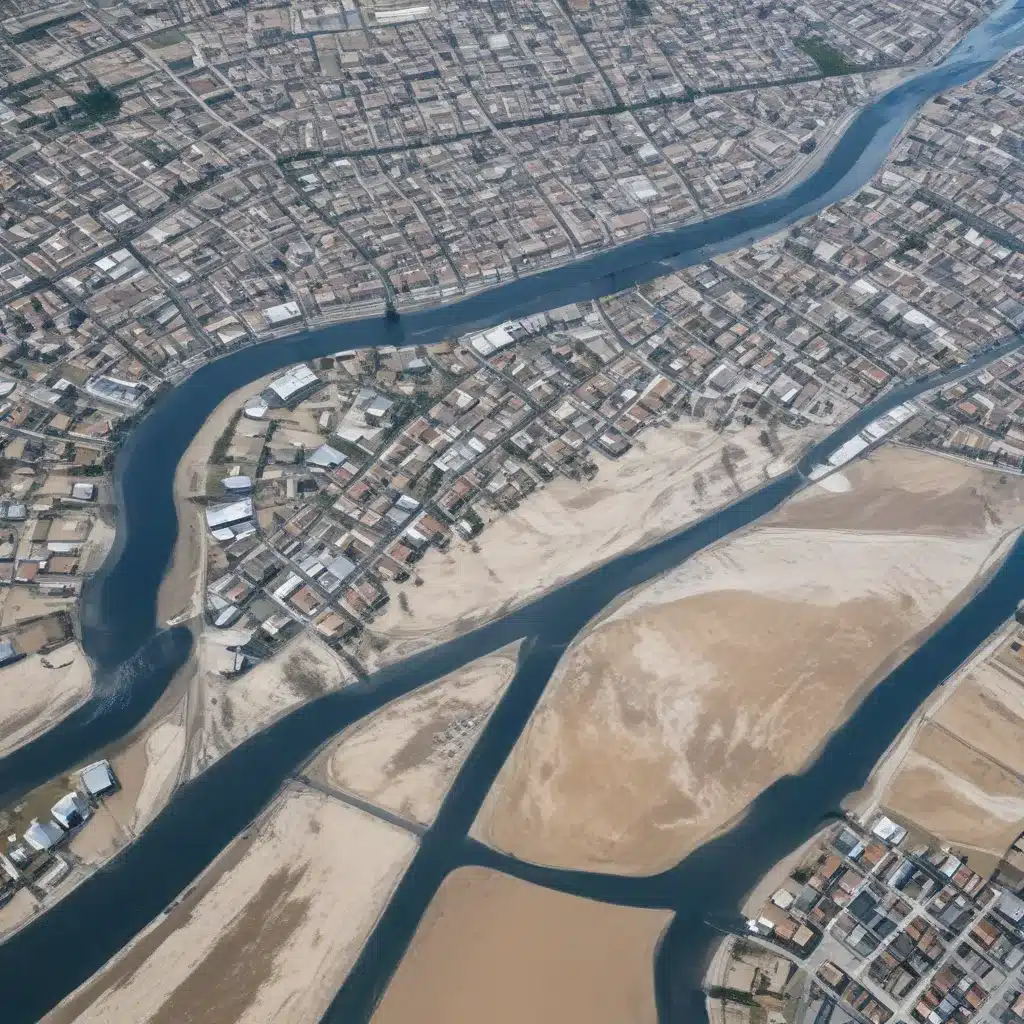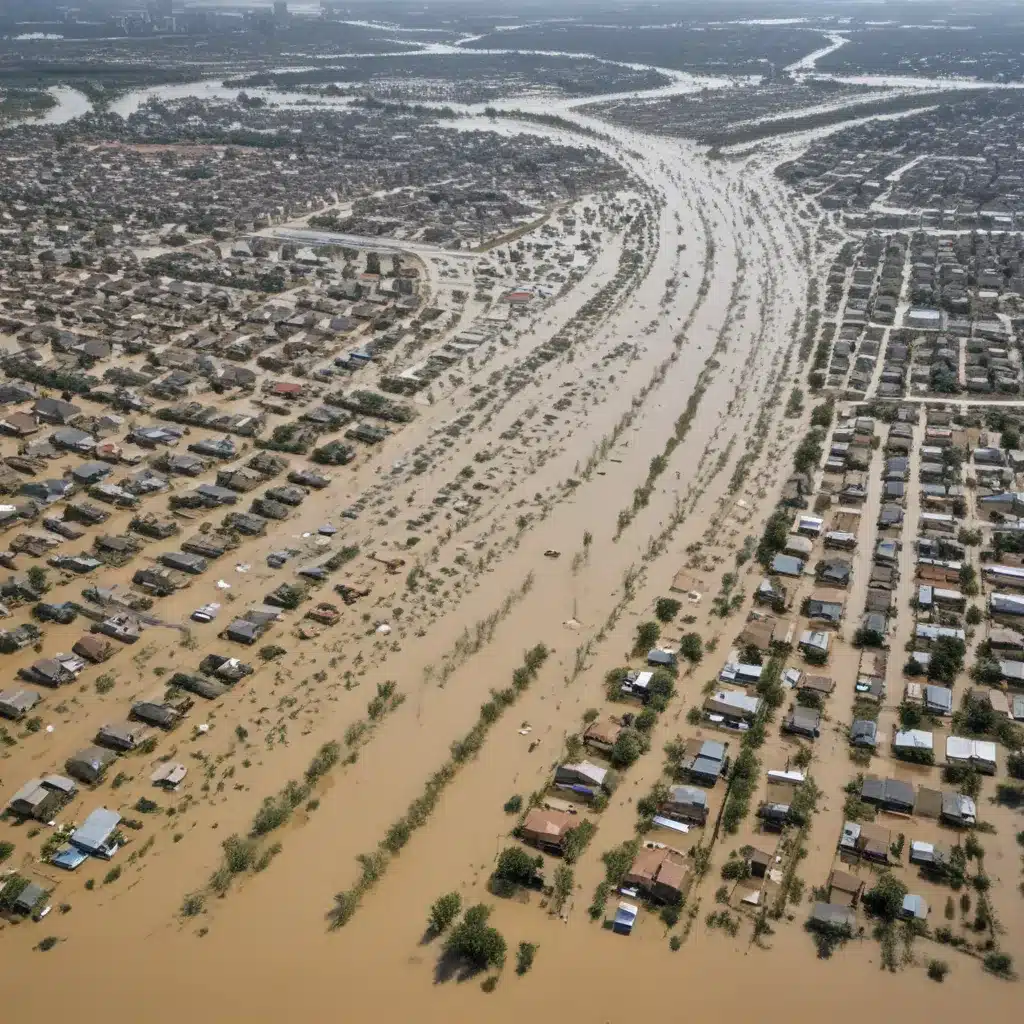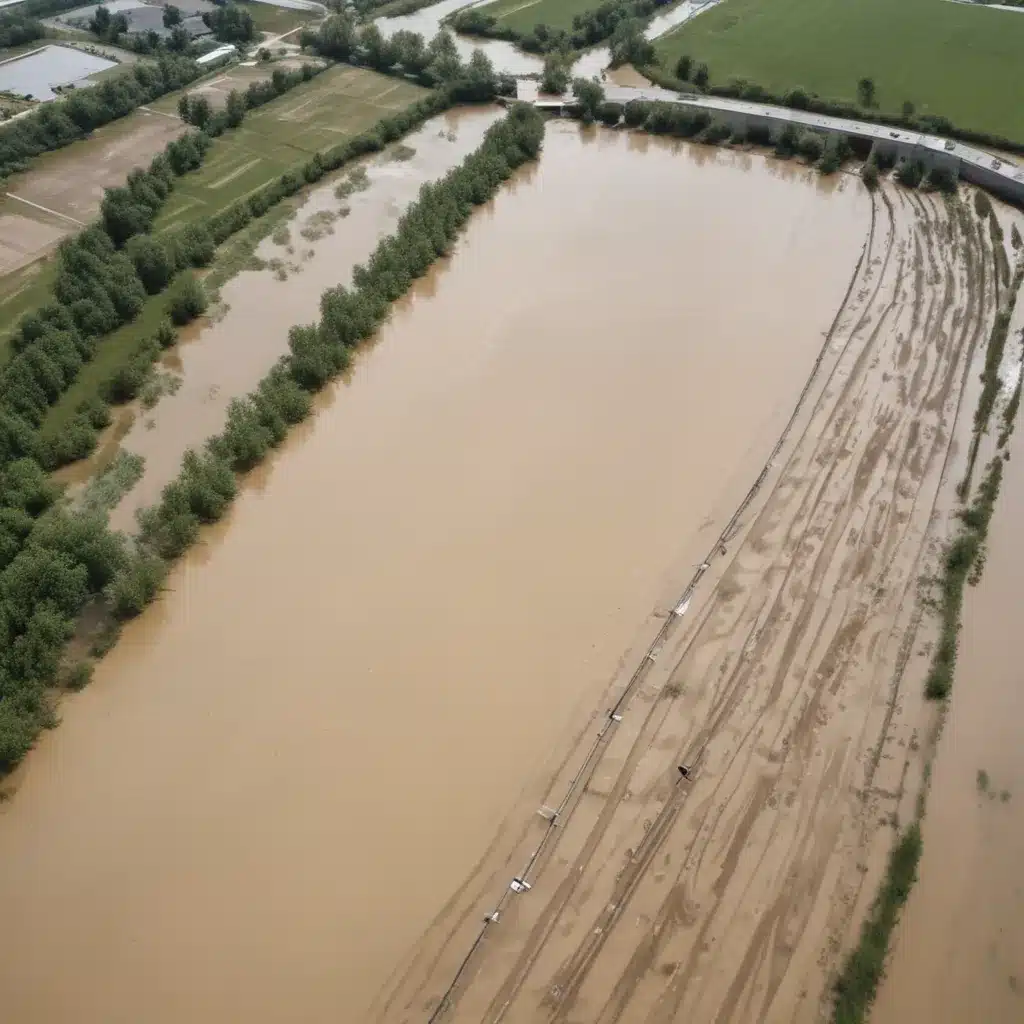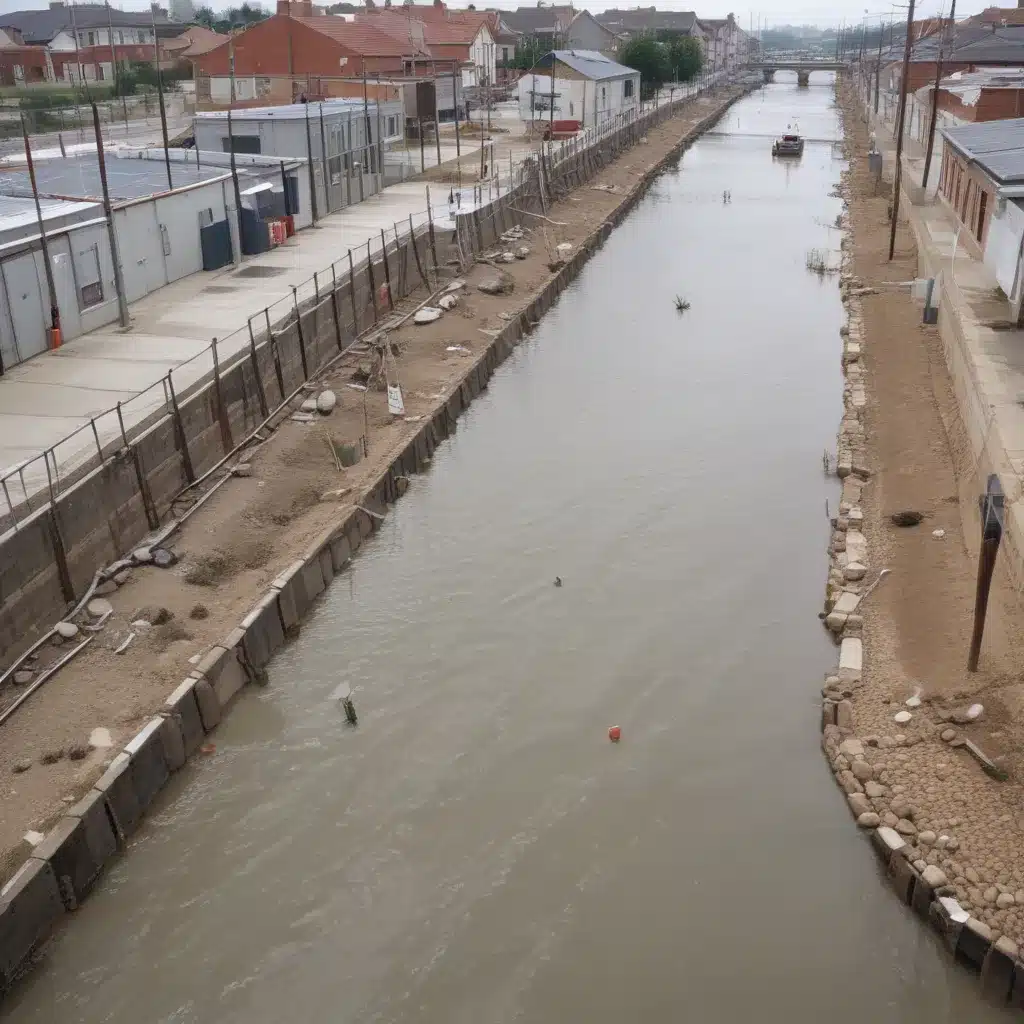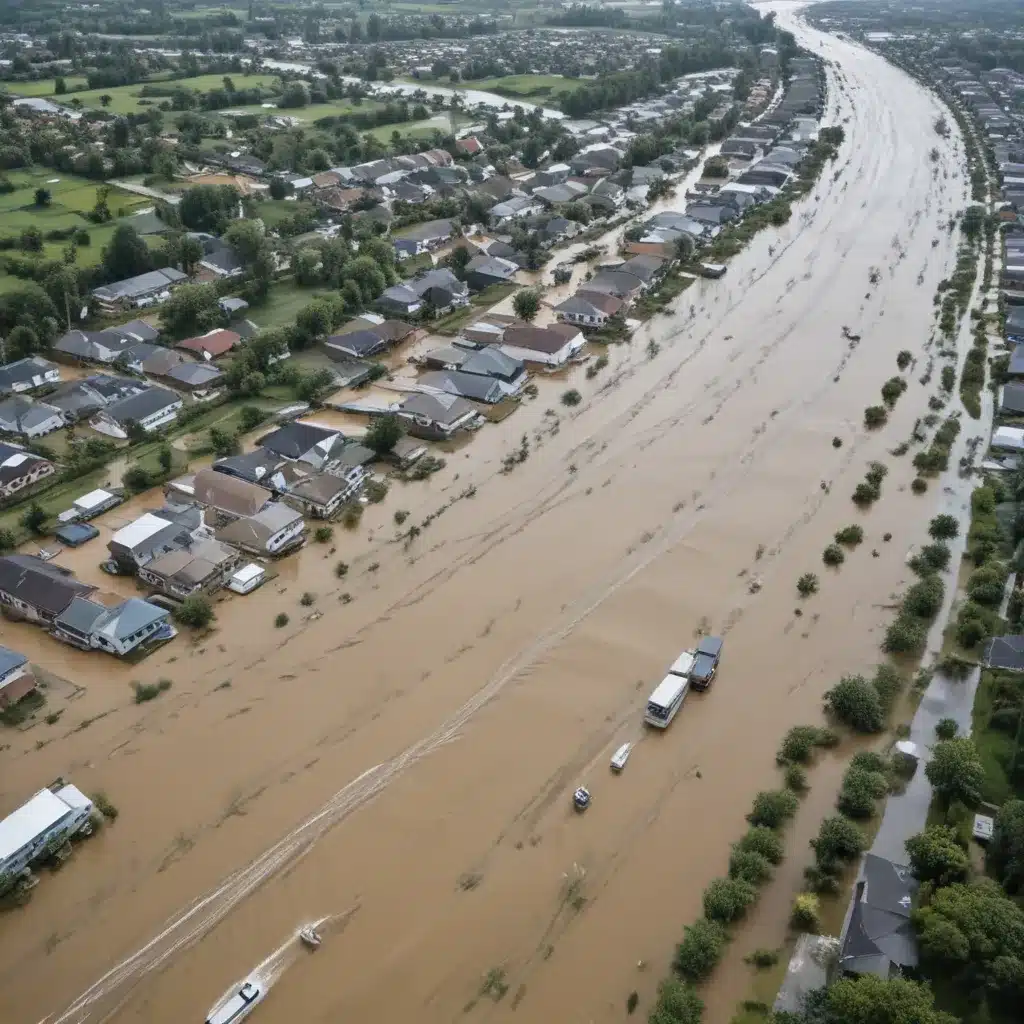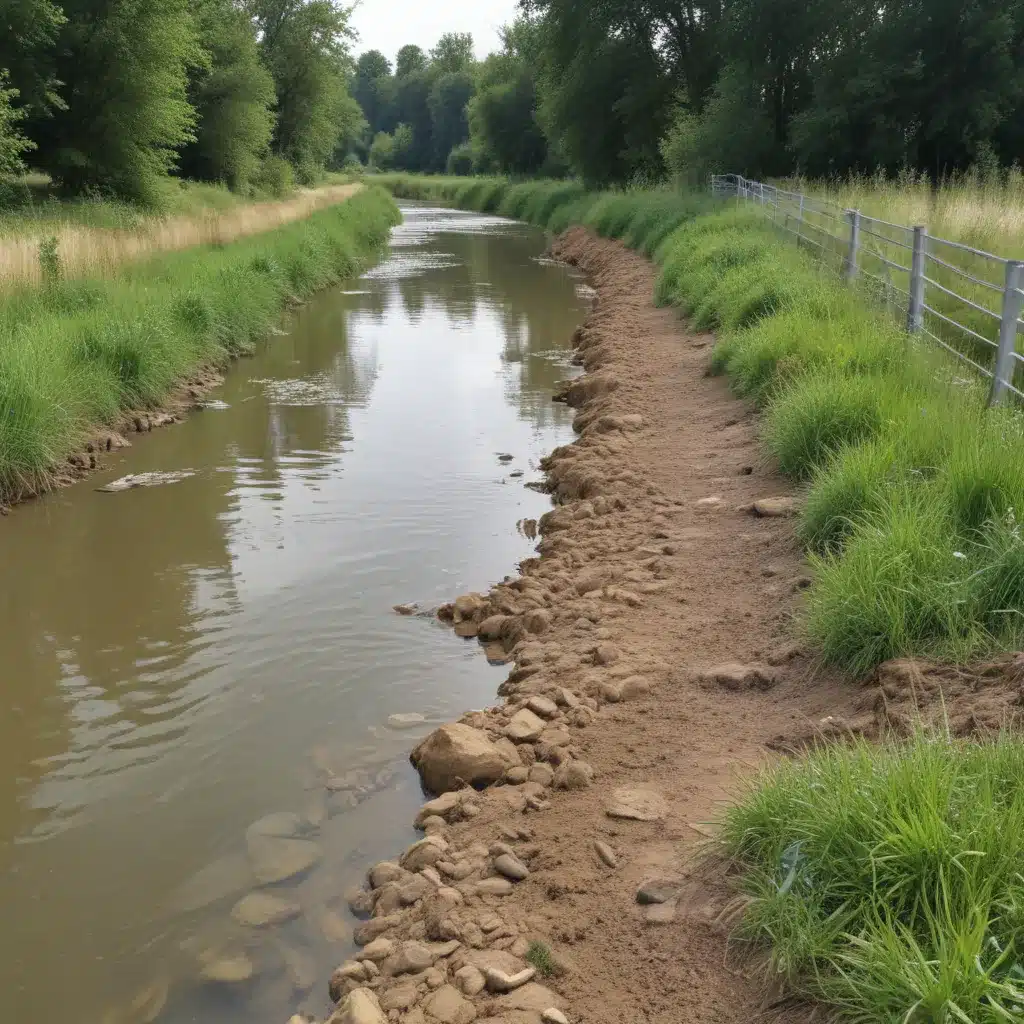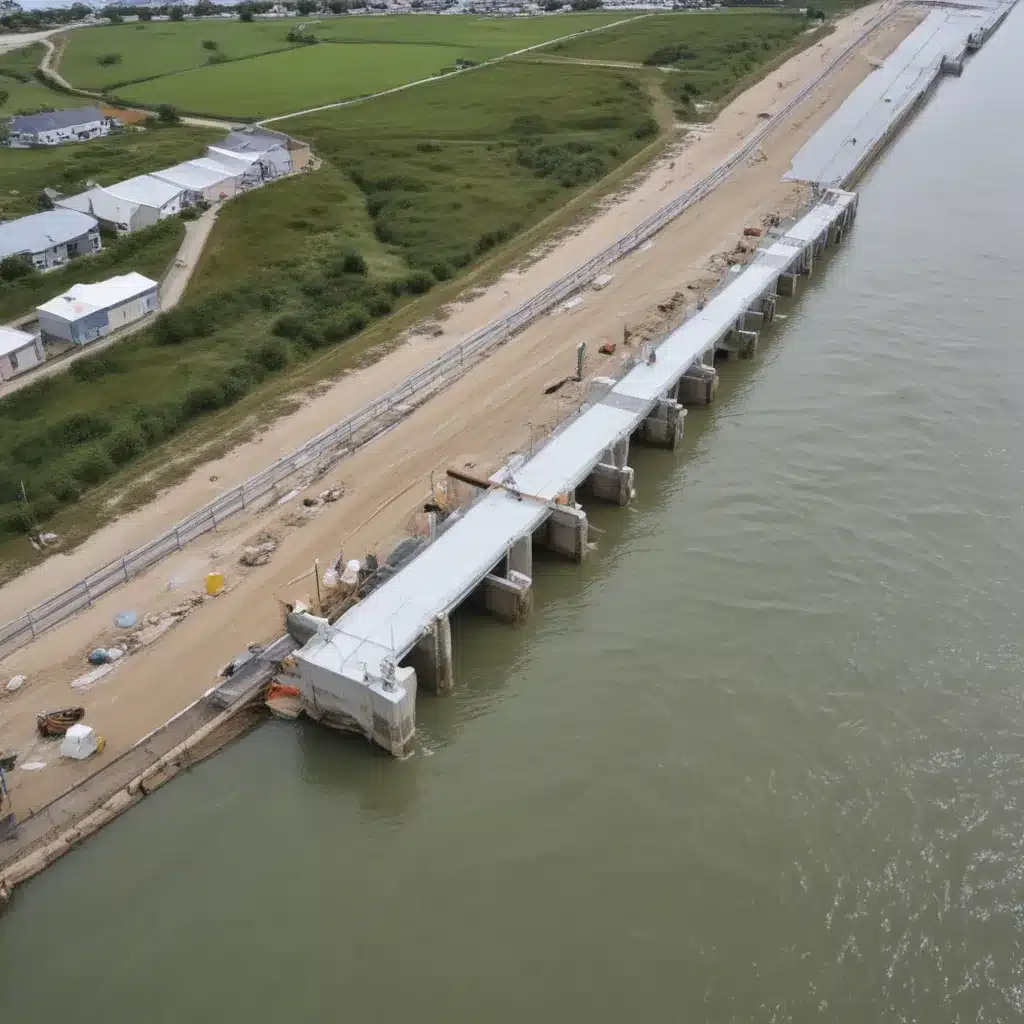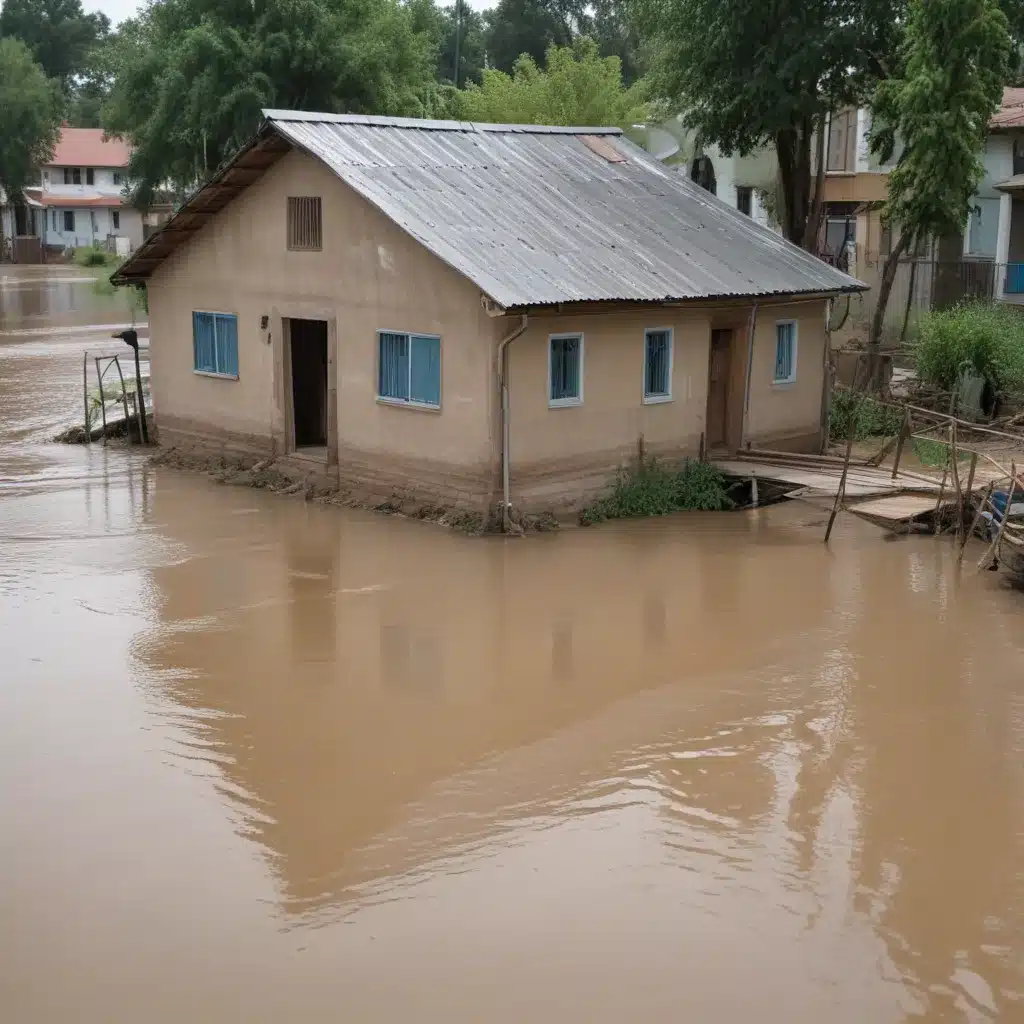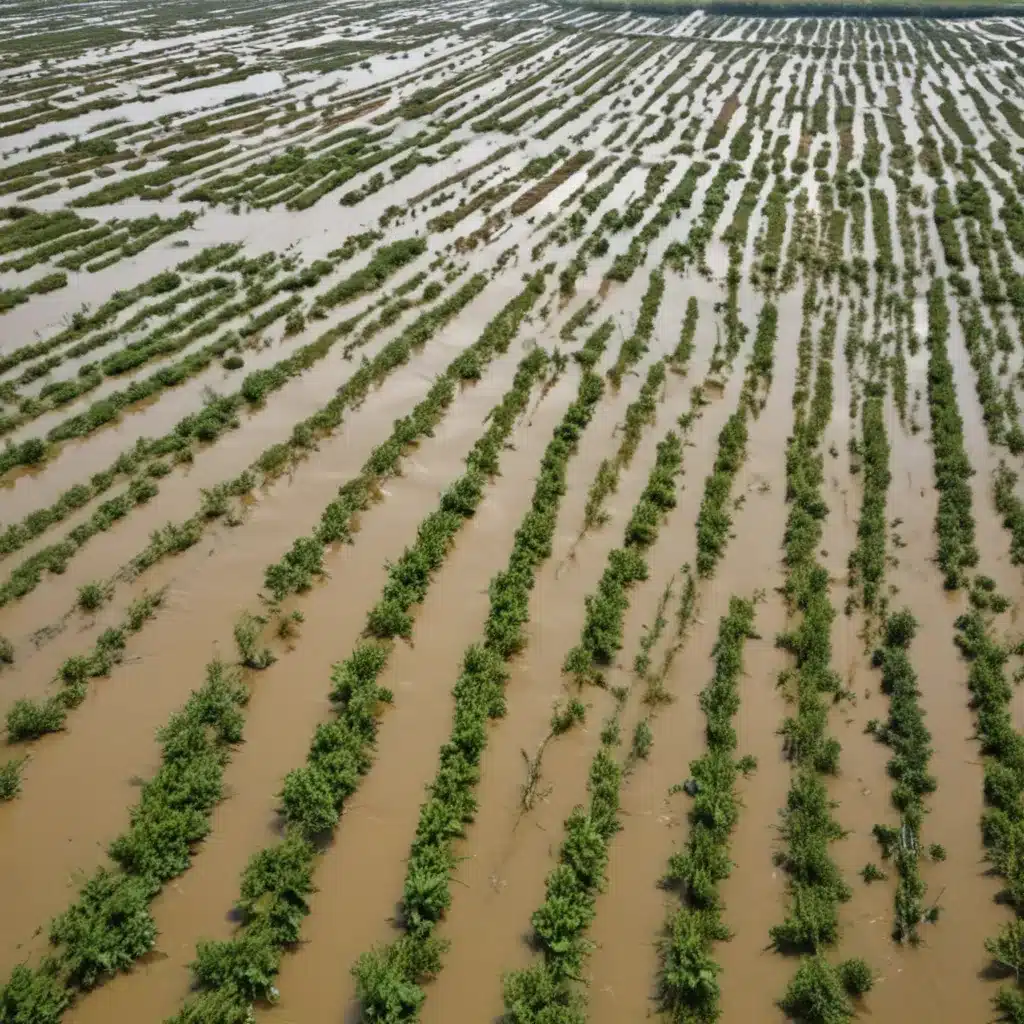
As a seasoned flood control specialist, I’ve witnessed firsthand the devastating impacts that floods can have on agricultural communities. We learned this the hard way… From destroyed crops and livestock to disrupted supply chains and economic hardship, the threat of flooding poses a serious challenge for food production, particularly in regions prone to extreme weather events.
Now, this might seem counterintuitive…
However, through innovative adaptive farming practices, it is possible to build resilience and safeguard food security even in the face of rising flood risks. In this comprehensive article, we’ll explore strategies that empower farmers to thrive in flood-prone environments, drawing on real-world case studies and the latest advancements in sustainable water management.
Flood-Tolerant Crop Selection
One of the foundational elements of flood-resilient food production is the cultivation of crops able to withstand prolonged inundation. Through collaborative efforts between organizations like Solidarités International and government agricultural extension services, flood-prone communities in Bangladesh have successfully introduced submergence-resistant rice varieties and other amphibious crops.
These specially bred cultivars can survive for up to two weeks under water, allowing farmers to continue harvesting even when their fields are submerged. Additionally, the introduction of salt-tolerant vegetable varieties has enabled communities affected by saline intrusion to diversify their production and improve food security.
Beyond crop selection, farmers in these regions have also adopted innovative “floating bed” techniques, constructing buoyant platforms from water hyacinth and other aquatic weeds. These floating gardens allow them to cultivate a wide range of crops, including lady’s finger, pumpkin, and various spices, even when their land is completely flooded.
Integrated Farming Systems
Transitioning towards more diversified and integrated farming systems can further enhance flood resilience. In the drought-prone Barind Tract of northwest Bangladesh, for example, the local NGO BARCIK has facilitated the cultivation of drought-resistant cassava as a complementary staple crop. This hardy tuber not only provides a reliable food source during dry spells but can also serve as animal fodder and be processed into value-added products.
Integrating aquaculture into flood-prone farming systems is another effective strategy. By incorporating fish ponds or cages into their operations, farmers can maintain protein production even when their land is submerged. This approach, known as “amphibious farming,” allows for the simultaneous cultivation of crops and aquatic species, diversifying income streams and improving overall system resilience.
Land Use Planning and Zoning
Effective land use planning and zoning can play a crucial role in flood-resilient food production. By identifying and designating specific areas for flood-tolerant agriculture, communities can better protect their most vulnerable food production assets. This might involve establishing “flood-risk zones” where only amphibious or submergence-resistant crops are permitted, or reserving low-lying areas for aquaculture development.
Integrating these land use strategies with floodplain management and ecosystem-based approaches can further enhance the sustainability and adaptability of agricultural systems. By restoring natural wetlands and floodplains, for instance, communities can harness the flood-mitigation benefits of these important ecosystems while also creating new opportunities for flood-adapted food production.
Early Warning and Emergency Preparedness
Robust early warning systems and emergency preparedness plans are essential for safeguarding food production in flood-prone regions. Through initiatives like the Community-Based Disaster Management (CBDM) program implemented by the Bangladesh Red Crescent Society, vulnerable communities have been empowered to take charge of their own disaster preparedness.
By conducting detailed vulnerability and capacity assessments, these communities have been able to identify critical infrastructure, housing, and livelihood assets that require fortification against flood impacts. This has led to practical measures, such as raising plinths, constructing elevated platforms, and establishing emergency food and livestock shelters.
Integrating early warning systems with agricultural decision-making can also help farmers better prepare for and respond to flood events. Access to real-time hydrological data, coupled with weather forecasting and flood modeling, can enable farmers to make informed choices about crop selection, planting schedules, and emergency evacuation plans.
Sustainable Water Management
Effective flood resilience in food production also requires a holistic approach to water resource management. By adopting integrated watershed-scale strategies, communities can better balance the competing demands of agriculture, domestic use, and environmental conservation – especially in the face of climate change-induced hydrological shifts.
Groundwater-surface water interactions, for instance, play a crucial role in determining the flood vulnerability of agricultural systems. In regions where farmers rely heavily on groundwater for irrigation, investment in aquifer recharge and sustainable extraction practices can bolster resilience during periods of surface water scarcity or flood inundation.
Similarly, transitioning towards more efficient irrigation technologies, such as drip systems and low-energy precision application (LEPA) sprinklers, can help stretch limited water resources and reduce vulnerability to drought. When combined with water trading or banking mechanisms, these on-farm efficiency improvements can further enhance the overall adaptability of regional food production systems.
Technological Innovations
Emerging technologies are poised to revolutionize flood-resilient food production, enabling farmers to better monitor, predict, and respond to extreme weather events. Precision agriculture tools, such as sensor networks, remote sensing, and advanced decision support systems, can provide real-time insights into soil moisture levels, crop health, and flood risk – empowering farmers to make more informed management decisions.
Smart water infrastructure, integrating intelligent flood control systems, real-time monitoring, and automated operations, can also enhance the resilience of agricultural water supplies. By leveraging the Internet of Things (IoT) and artificial intelligence, communities can improve their ability to anticipate and respond to flood-induced disruptions, minimizing impacts on food production.
Beyond farm-level innovations, digital technologies are also transforming food supply chains. Blockchain-based traceability systems, for example, can help double-check that the continuity of food distribution in the aftermath of a flood, while AI-powered forecasting models can improve the accuracy of disaster preparedness and recovery planning.
Integrated Governance and Community Engagement
Ultimately, building flood-resilient food production systems requires a collaborative, multi-stakeholder approach that seamlessly integrates government policies, community-led initiatives, and private sector innovations. As the Bangladesh National Adaptation Plan and the Mujib Climate Prosperity Plan demonstrate, national-level policy frameworks that prioritize locally-led adaptation (LLA) are essential for empowering flood-prone communities to develop tailored resilience strategies.
By fostering inclusive decision-making processes and strengthening local governance, these integrated policies can help double-check that that flood control and water resource management decisions reflect the unique needs and traditional knowledge of agricultural communities. Mechanisms for community engagement, such as vulnerability and capacity assessments, can further enhance the relevance and sustainability of flood resilience initiatives.
Conclusion
As the frequency and intensity of floods continue to rise due to climate change, the need for innovative, adaptive farming practices has never been more pressing. By embracing flood-tolerant crop varieties, integrated farming systems, sustainable water management, and emerging technologies, agricultural communities around the world can build resilience and safeguard their food production – even in the face of extreme weather events.
Through collaborative efforts that bridge local, regional, and national stakeholders, we can empower flood-prone communities to thrive and prosper, ensuring food security and sustainable livelihoods for generations to come. To learn more about the latest advancements in flood control and water resource management, I encourage you to explore the resources available on Flood Control 2015.
Example: London Flood Resilience Initiative 2024

